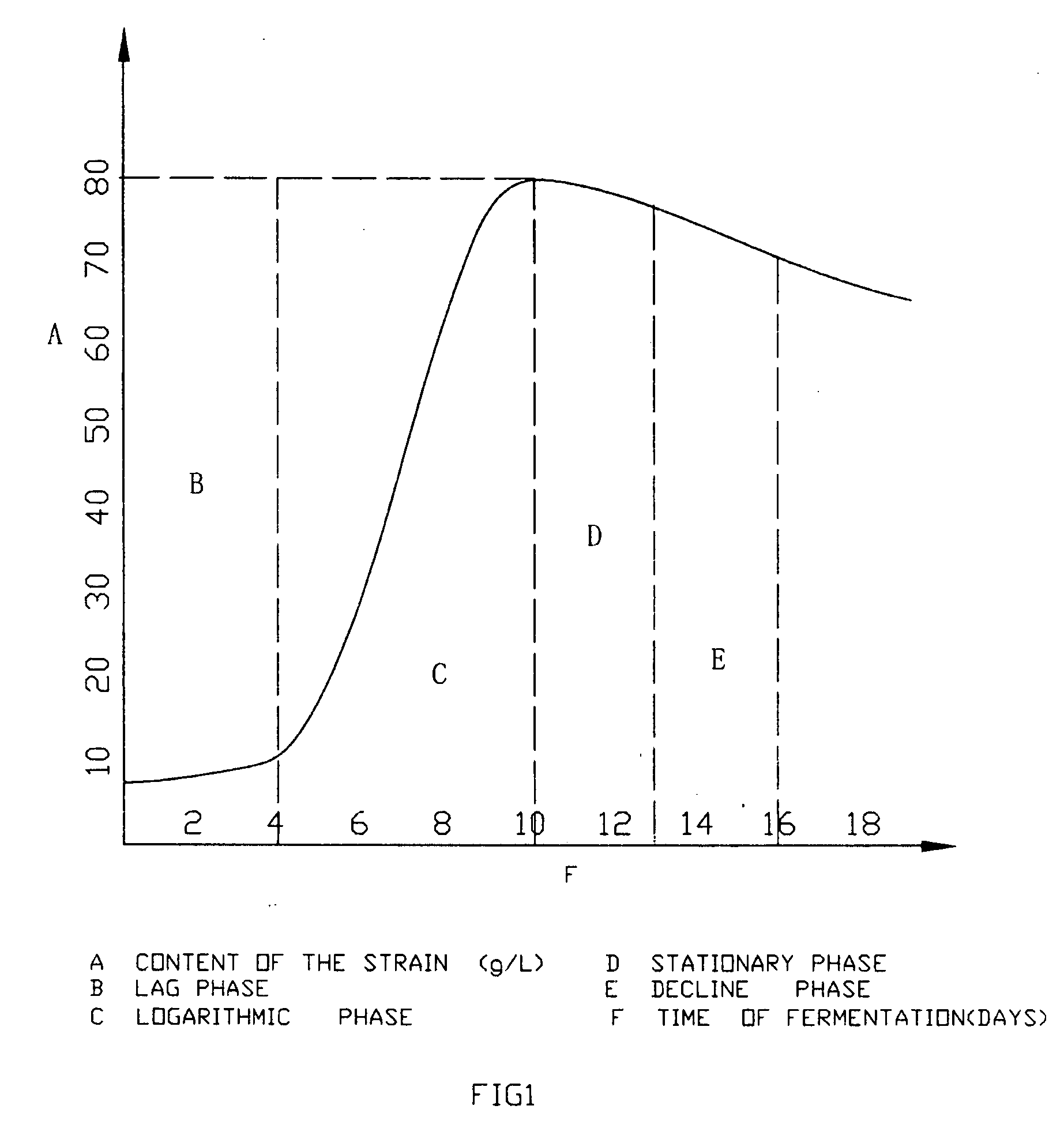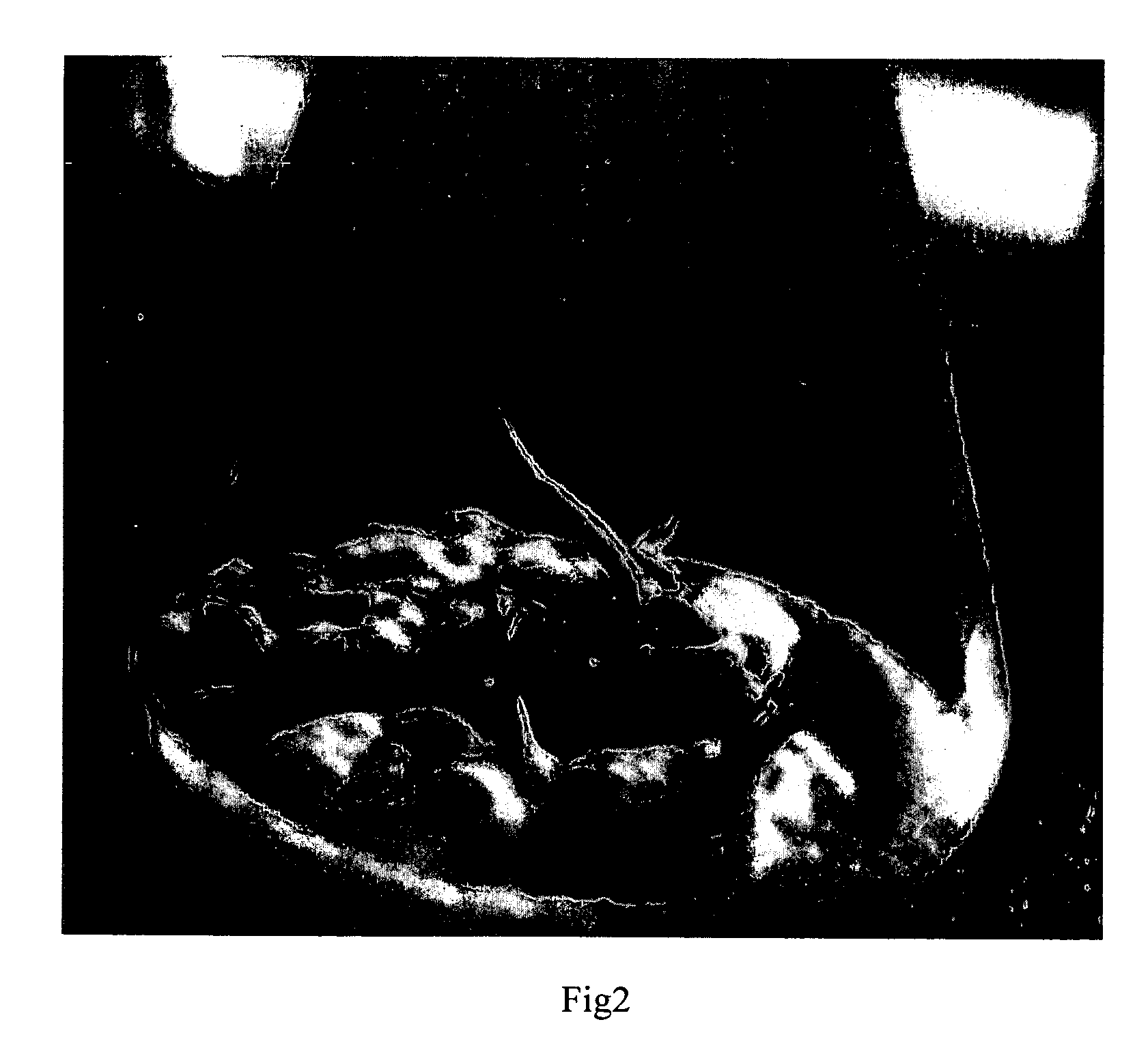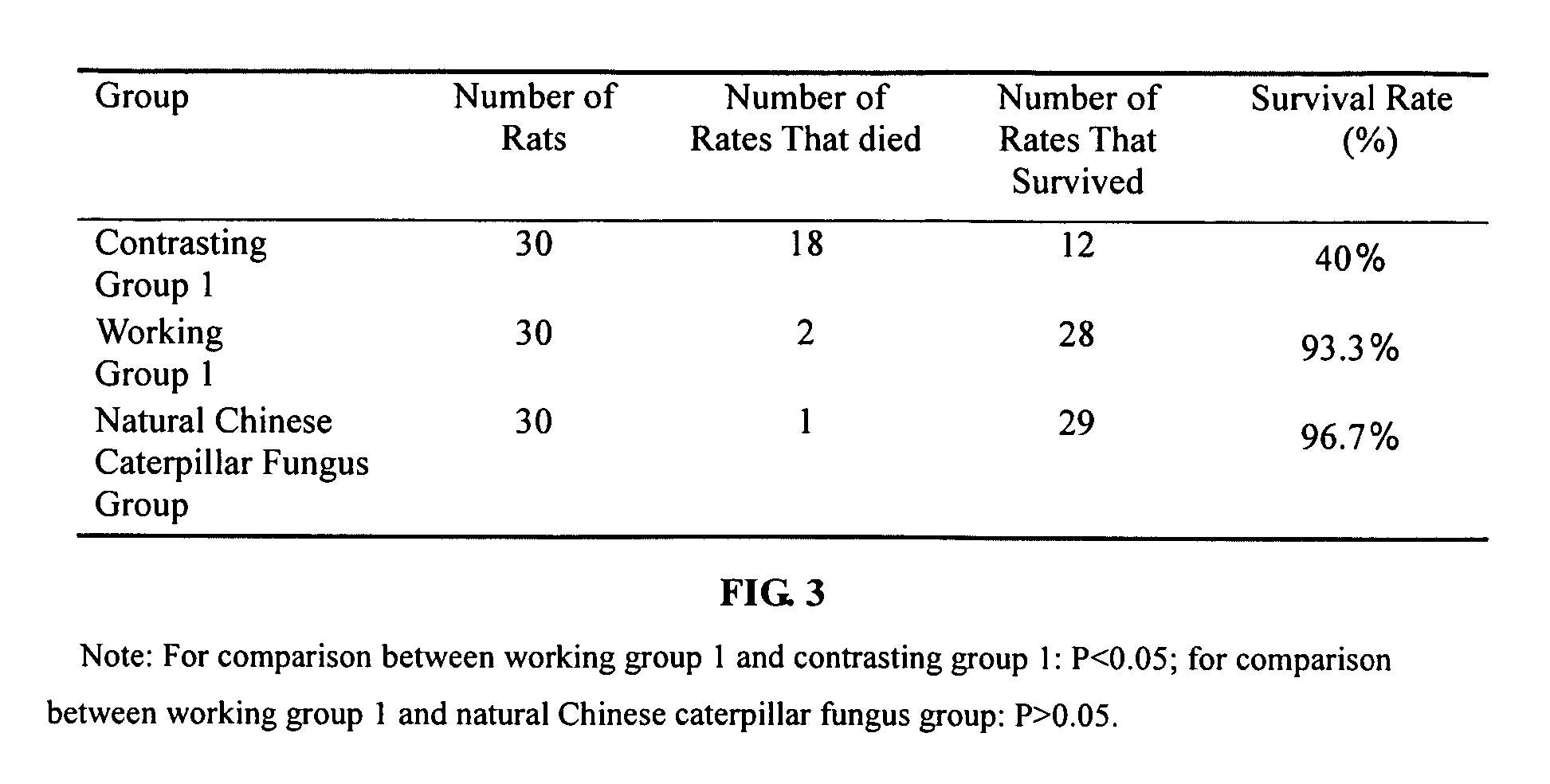Industrial fermenting production process of Hirsutella hepiali Chen & Shen of anamorphic fungi related to Chinese Cordyceps Sinensis
a technology of anamorphic fungi and industrial fermentation, which is applied in the direction of plant/algae/fungi/lichens ingredients, drug compositions, immune disorders, etc., can solve the problems of loss of some hyphae, inconsistency of heating and oxidation, and the color and ingredients of the product will be affected
- Summary
- Abstract
- Description
- Claims
- Application Information
AI Technical Summary
Benefits of technology
Problems solved by technology
Method used
Image
Examples
working examples
[0043] The present invention now will be described in further detail through the following working examples, but the present invention is not limited to or by these examples.
working example 1
[0044] We have isolated new fungal strains in the growing area every year and then cultivated them at 10° C. through the sexual and asexual reproductive portions of their developmental cycle, during which stromata and conidia develop. Then the obtained fungal strains are introduced into 500 ml Erlenmeyer flasks for cultivation at 0-10° C., in order to identify whether the cultivated fungal strains are true Chinese caterpillar fungi. I.e., if any one fungal strain can develop stromata, it can be identified as a true Chinese caterpillar fungus, and if it can not develop stromata, it should be eliminated. The fungal strains, which have been utilized in production and have been purified and reproduced for more than 10 generation, must be rejuvenated in a high-nutritional solid culture medium at 0-10° C. for more than 5 generations. If as a result of comparison the conidia and conidiophores grown from rejuvenated fungal strains are identical to those from the fungal strains that are newl...
working example 2
[0054] We have isolated new fungal strains in the growing area every year and then cultivated them at 16° C. through the sexual and asexual reproductive portions of their developmental cycle, during which stromata and conidia develop. Then the obtained fungal strains are introduced into 500 ml Erlenmeyer flasks for cultivation at 5° C., in order to identify whether the cultivated fungal strains are true Chinese caterpillar fungi. I.e., if any one fungal strain can develop stromata, it can be identified as a true Chinese caterpillar fungus, and if it cannot, it should be eliminated. The fungal strains, which have been utilized in production and have been purified and reproduced for more than 10 generation, must be rejuvenated in a high-nutritional solid culture medium at 5° C. for more than 5 generations. If as a result of comparison the conidia and conidiophores grown from rejuvenated fungal strains are identical to those from the fungal strains that are newly isolated from the grow...
PUM
| Property | Measurement | Unit |
|---|---|---|
| temperature | aaaaa | aaaaa |
| temperature | aaaaa | aaaaa |
| temperature | aaaaa | aaaaa |
Abstract
Description
Claims
Application Information
 Login to View More
Login to View More - R&D
- Intellectual Property
- Life Sciences
- Materials
- Tech Scout
- Unparalleled Data Quality
- Higher Quality Content
- 60% Fewer Hallucinations
Browse by: Latest US Patents, China's latest patents, Technical Efficacy Thesaurus, Application Domain, Technology Topic, Popular Technical Reports.
© 2025 PatSnap. All rights reserved.Legal|Privacy policy|Modern Slavery Act Transparency Statement|Sitemap|About US| Contact US: help@patsnap.com



